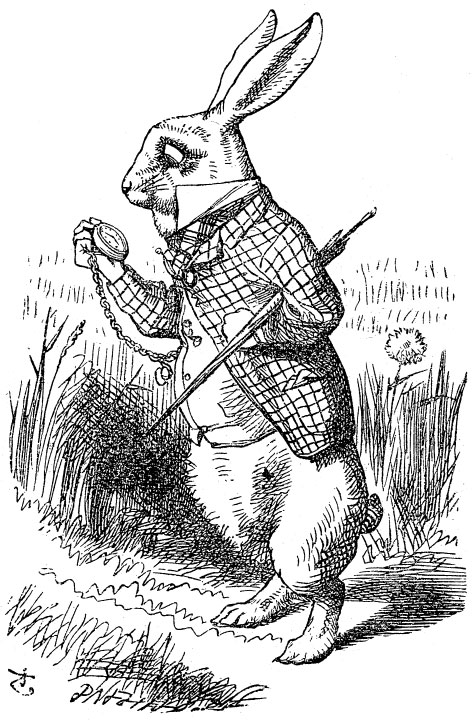¬ Lewis Carroll’s novel Alice’s Adventures in Wonderland and Through the Looking-Glass (1865) and Walt Disney’s Alice in Wonderland (1951) share many similarities as well as differences in the contexts of the conjunction between time, stress, and death. There is a sense of time and stress that is put upon Alice when she enters and travels through Wonderland, affecting her emotionally and physically. Among the many reproductions of this classic story, the most recently released is the SYFY channels “Alice” (2009). Given the large gap in time between all three versions, “Alice” successfully portrays Alice’s journey through Wonderland, but with many twists. Just as the novel and Disney’s version focused on the motifs of death and time, SYFY’s version was able to as well with a modern day touch.
In “Alice”, the first indication of time that we see is the age of Alice. She is a grown woman around the age of 20 instead of a young child. Already she is faced with the pressures that came with time; a career of a karate instructor, attending to a relationship, and the obligation of financing a home with her mother. Her mother later mentions that Alice is “meticulous with dates”, which gives us an indication that she is now under constant pressure of the ticking of the clock and well aware of it. This fact was released when Alice and her mother discuss the exact time and date of her fathers disappearance when she was a child. Crossing into the theme of death, Alice continues a search via the Internet for her father, with the possible outcome of finding out that he has passed away. Later on in the movie, when Alice and her father are reunited in Wonderland, he then killed by a bullet that was meant for Alice. The Queen of hearts son, Jack, made this reunion possible by giving a watch to Alice. This watch, an obvious symbol of time, belonged to her father and was stuck on the time and date in which he disappeared, sparking the memory of that day and that Alice is his daughter.
Other obvious references to time were of course with the White Rabbit and the Hatter, just like the novel and Disney’s Alice in Wonderland, but “Alice” put a spin on to some.
For example, we are conscious that the Mad Hatter is stuck in a perpetual tea time, but in SYFY’s “Alice” Hatter is not held down by time, but rather is an owner of a tea shop. His character in this version is more involved with Alice and has more patients and knowledge. In face, the Hatter informs Alice that “wisdom is the biggest threat”. In contradiction to the pressure and stress of time in Lewis Carroll’s novel and Disney’s film, time in this sense could be a beneficial factor. With time comes knowledge, and in “Alice’s version of Wonderland, wisdom is a powerful tool and key for survival.
Death, another reoccurring theme in all three versions, was taken to a whole other level in SYFY’s “Alice”. Although there are many occurrences through the movie that is relatable to the novel and 1951 film, the most obvious and grand example in “Alice” is at the end of the movie when the factory where the Queen of Hearts and all that she rules resides. A more modern ending the story indeed; Alice doesn’t wake up from a nightmare, as she has done in every version prior, instead she and Hatter destroy the factory that drains emotions from humans (the “clams”, eventually killing them), as well as some of the queens people. This was such a strong reference to death; the killing of a hierarchy as well as a system that claimed the lives of humans in order to fulfill those of Wonderland.
¬ Lewis Carroll’s novel Alice’s Adventures in Wonderland and Through the Looking-Glass (1865), Walt Disney’s Alice in Wonderland (1951), and SYFY’s “Alice” were all successful in signifying the motifs of time and death. Even though the advancements and alterations via the available technology led this version to have a different story line, it was still exciting to see yet another interpretation of the classic “Alice in Wonderland”.
Subscribe to:
Post Comments (Atom)


No comments:
Post a Comment